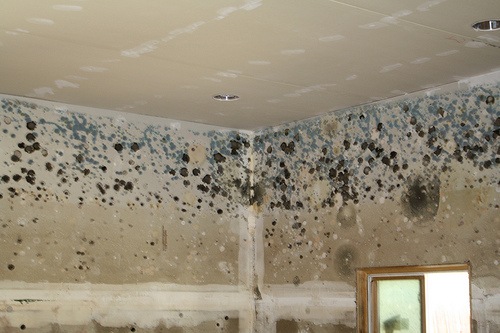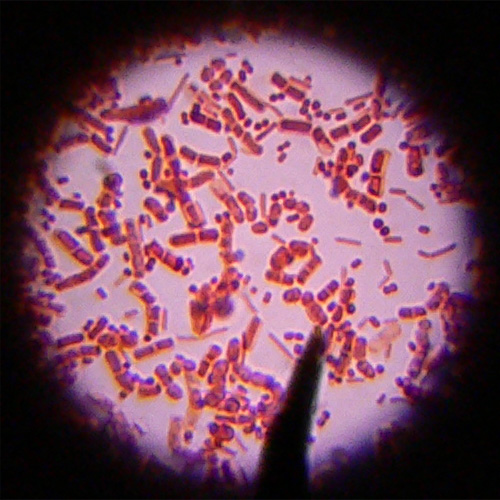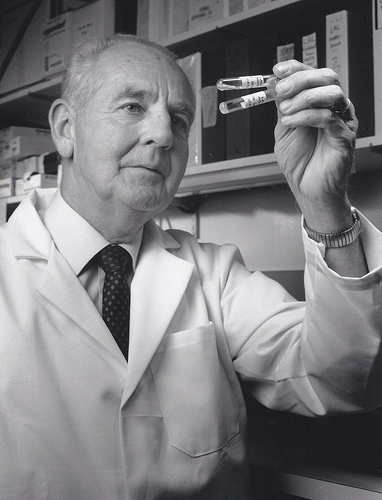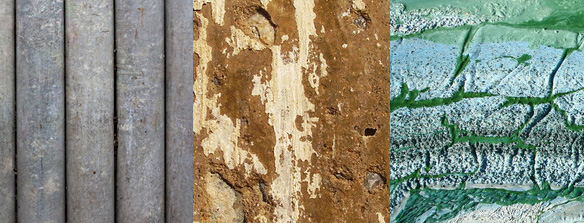Recent intense storms and changes in weather patterns attributed to climate change mean that we are receiving more water and flooding than before. If your home has flooded, take the time to learn about the associated risks. Standing water and moisture are perfect conditions for hosting a plethora of microorganisms. Once the water is removed, it may seem like the dangers have been removed. Unfortunately, this is not the case. Even after the flood water has been removed, there are still hidden risks threatening your household. Tiny things such as microbes, gases, and tiny particles that have become airborne after a flood can cause an increased risk of spreading infectious diseases, allergic reactions, lung complications and diseases, and even death. Here are 7 major risks your home is exposed to after a flood.
1. Mould

Image source: carlpenergy
Mould is a type of fungus that grows in moist conditions and feeds on biodegradable material. It is responsible for rotting food. After a flood, conditions are ripe for mould to grow. Mould produces mycotoxins, which are seriously harmful to the body when inhaled or ingested, or when they come in contact with the skin. Airborne mould particles called spores are always in the air. Mould spores can germinate and grow on anything that contains organic matter and moisture. Since carpets and drywall take relatively long to dry, these items need to be completely removed from a house following a flood, as mould can grow faster than they can dry.
2. Carbon Monoxide
Carbon monoxide is an odourless, colourless gas that is fatal when concentrations are too high. When carbon monoxide is breathed in, it binds to hemoglobin in your blood, taking up the binding site of oxygen. This prevents oxygen from being delivered to the body and can eventually suffocates the person.
When cleaning up after a flood, gasoline-powered pressure washers and other appliances running on generators are sometimes used. These appliances expel carbon monoxide and should never be used indoors, or near doors or windows. Because carbon monoxide is so hard to detect, it is vital to have a carbon monoxide detector in your home.
3. Airborne Asbestos and Lead Dust
When asbestos and lead are contained in the structural materials of your home, they are relatively safe. However, flooding causes damage to these structures, thereby releasing asbestos and lead into the air.
Airborne asbestos, when inhaled, can cause damage to your lungs and a variety of dangerous conditions and diseases, including asbestosis, lung cancer, diffuse pleural thickening (when the walls of your lungs harden from scars caused by asbestos fibres), and asbestos warts.
Lead is a poisonous material that can be found in many household items, including house paint (before 1978), pipes, soldering, toys, and even dust. Lead can accumulate in the body over time, leading to lead poisoning, a lethal condition.
4. Sewage Contamination
Sewage waste contains all sorts of nasty microbes, such as viruses, bacteria, and parasites. Many floods are caused by backed up or clogged pipes. However, you should consider all flood water contaminated. Water contaminated by sewage waste carries a risk of airborne bacteria, viruses, and parasites as well. Anything the water comes in contact with should be considered as contaminated with sewage waste and treated as such.
5. Bacteria

Image source: kaibara87
Bacteria embody a large number of microorganisms, the oldest organisms on Earth, and are present almost everywhere on Earth.
Bacteria of all kinds grow in standing flood waters. When the water is removed, some bacteria may remain. Some of these bacteria, such as E. coli, may cause life-threatening diseases and conditions. Once flood waters are removed, bacteria must be killed immediately to prevent cultures from growing and spreading.
6. Endotoxins

Image source: United States Government Work
Where there are bacteria, there are endotoxins. Endotoxins, toxic substances found on bacterial cell walls, are released when the bacterial cell ruptures or disintegrates. They cause a wide range of conditions, including septic shock, endotoxemia, auto-immune disease, and many, many others.
7. Viruses
Viruses are not considered living by scientists. They are simply infectious agents whose only goals are to self-replicate (inside a living host). Viruses may be released into the air or contaminate a surface during a flood. Like Bacteria, after a flood, viruses must be killed immediately before they infect someone.
Sources:
http://www.cdc.gov/healthywater/emergency/flood/buildings.html
http://www.albertahealthservices.ca/Advisories/ne-pha-cleaning-house.pdf
http://www.getprepared.gc.ca/cnt/hzd/flds-ftr-eng.aspx
http://www.epa.gov/iedweb00/pdfs/floods.pdf
http://www.lung.org/healthy-air/home/resources/emergencies-disasters/flood-water-damage.html
http://microbe.net/2013/10/03/flooding-and-indoor-air-quality/
http://www.nlm.nih.gov/medlineplus/ency/article/002473.htm
http://www.britannica.com/EBchecked/topic/187122/endotoxin












